'It's just continuous': Gunshot patients are becoming more common in Akron's ERs
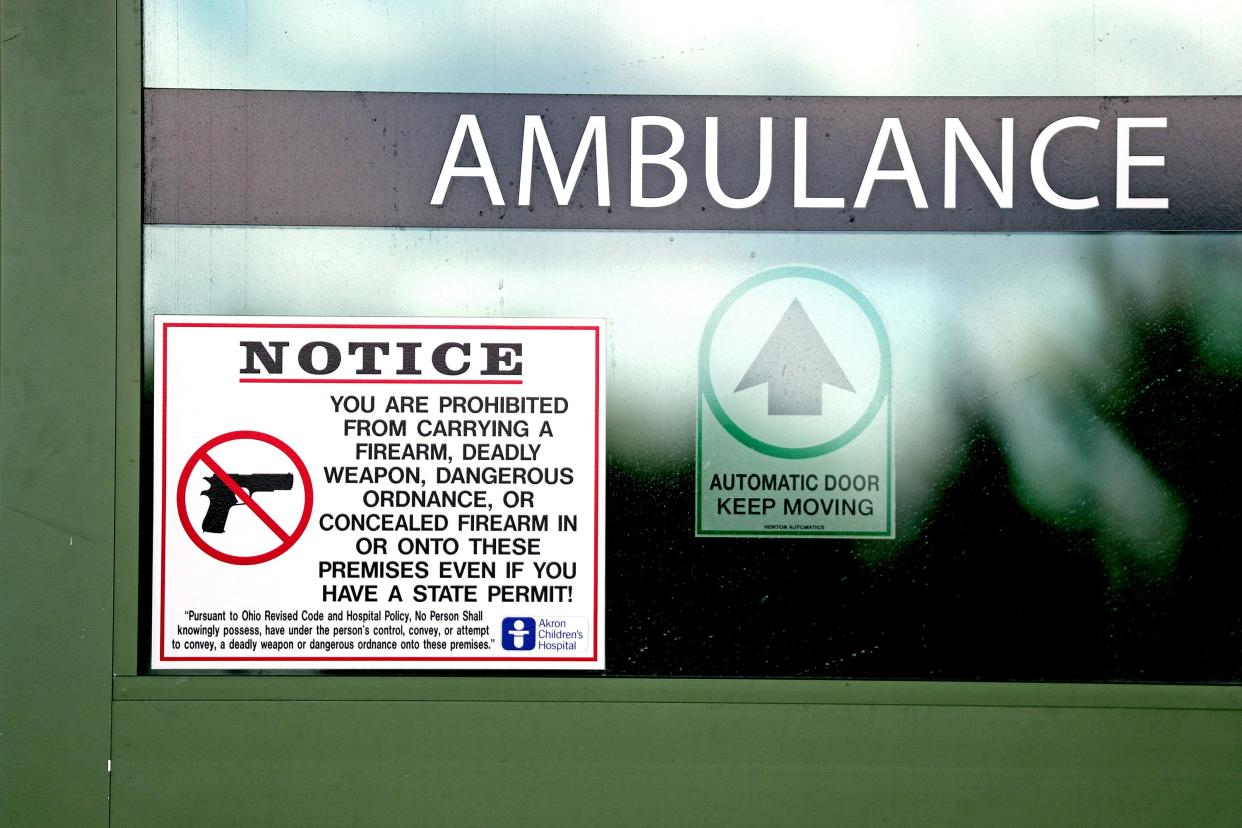
- Oops!Something went wrong.Please try again later.
Dr. Laura Pollauf remembers the first gunshot victim she ever treated. It was actually an adult who arrived at Akron Children’s Hospital’s emergency department overnight in the late 1990s.
“It stood out because it was something that I had not experienced,” said Pollauf, who has been with the hospital for 30 years.
Back then, treating a patient with a gunshot wound was a rarity for the pediatric hospital.
“It was so unusual and now, unfortunately, it’s not,” said Pollauf, the division director of pediatric emergency medicine at Children’s.
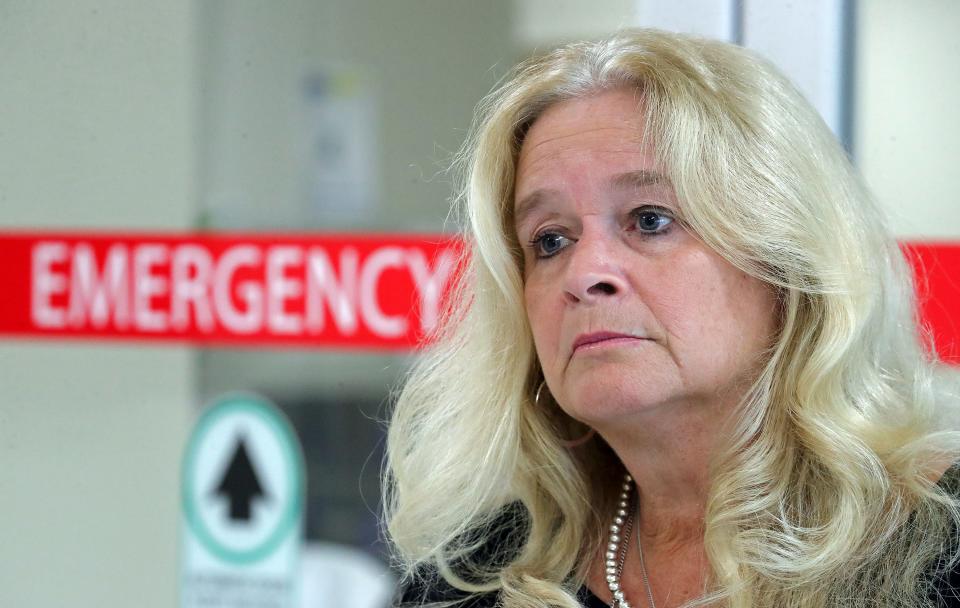
Members of trauma teams across Akron’s three Level I trauma emergency departments – designated by the American College of Surgeons to be able to treat the most life-threatening emergencies – say they have seen an exponential increase in gunshot wound victims in the last few decades.
The largest spike came during the COVID-19 pandemic. Trauma teams hoped the violence would subside after the height of the pandemic.
It didn’t.
“Since the pandemic started, it got way worse,” said Dr. Steven Brooks, chair of emergency medicine at Cleveland Clinic Akron General.
“The number of gunshot (patients) has gone up significantly” and stayed high, he said. Stab wounds also have increased significantly, added Dr. Farid Muakkassa, trauma medical director and chief of trauma surgery at Akron General.
“For sure, the gunshot violence has increased,” agreed Alexandra Carpenter, trauma program manager at Summa Akron City Hospital.
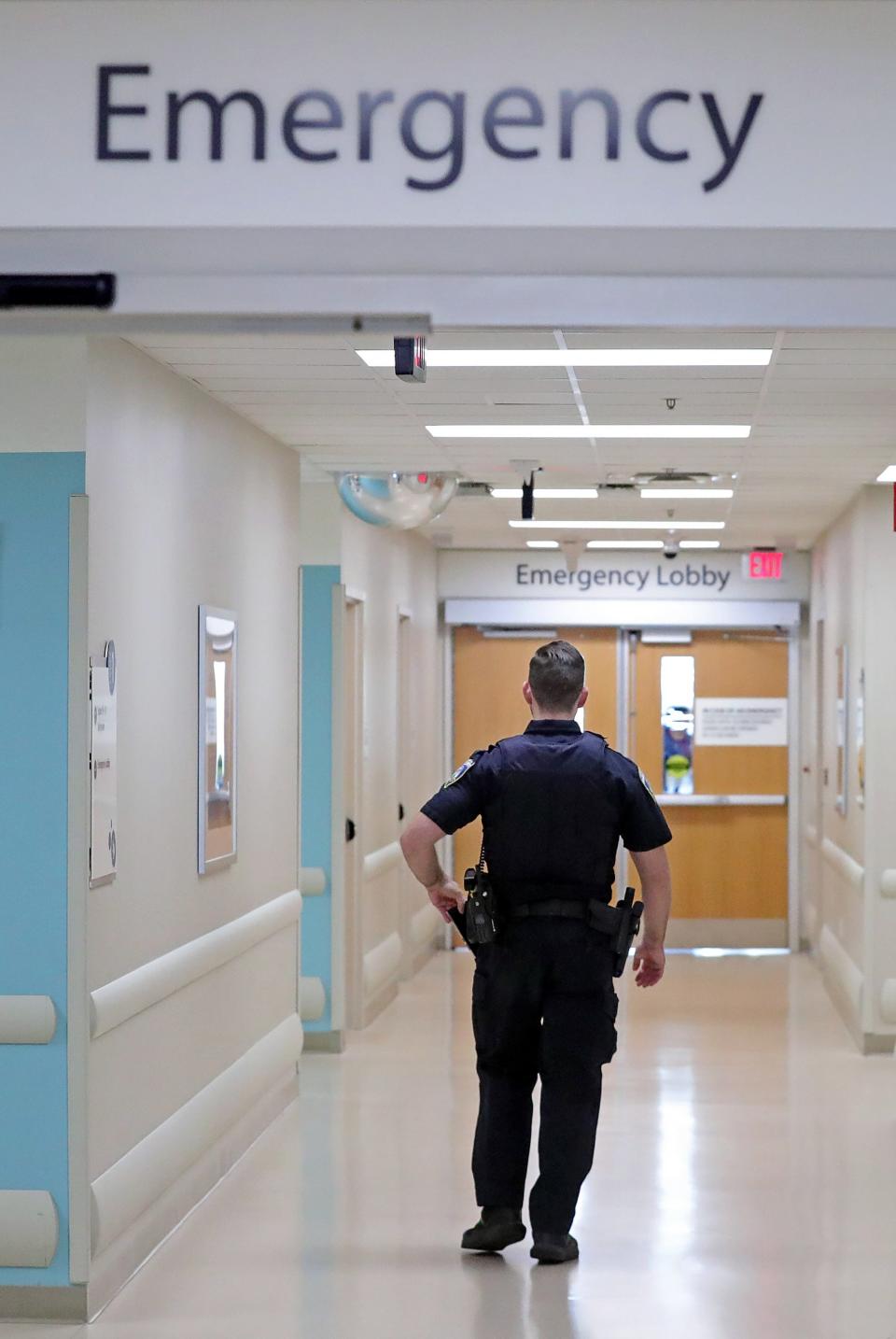
“Firearm injuries overall, not necessarily specific to just gun violence, [have] increased since the pandemic. It's increased and has stayed the same,” she said. “And then even in this year, we are already at a higher rate of firearm injuries than we have been in the previous years.
“We’re trending to be the highest we’ve been this year compared to previous years,” she said.
Gun violence: Akron’s 3 hospitals seek solutions
Nearly 1,000 Summit County residents treated for gunshots in 5-year period
According to an August Summit County Public Health report of assault-related deaths and emergency room visits from 2016 to 2021, nearly 1,000 Summit County residents were treated at a hospital for firearm-inflicted injuries.
There were also 585 ER visits caused by an accidental firearm discharge since 2016.
Nearly 70% of all Summit County gunshot wound victims were ages 18 to 34, according to the county report. The vast majority – 85.2% – were male.
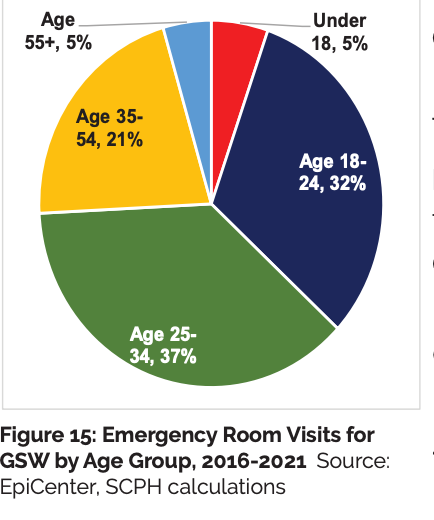
Though Black residents make up 14% of Summit County’s population, 25.9% of gunshot wound-related ER visits involved Black patients, according to the report.
Meanwhile, while 75% of Summit County's population is white, only 55% of ER visits for gunshot wounds involved white patients.
More than half of all gunshot wound visits (54%) and accidental discharge visits (51%) came from five ZIP codes: 44306 (East Akron), 44320 (West Akron), 44311 (downtown Akron), 44310 (North Hill) and 44305 (Goodyear Heights), according to the report.
There were also more than 10,000 Summit County residents treated in emergency rooms between 2016 and 2022 for a violence-related reason not involving a gunshot, according to the public health report. These included stabbings, injuries sustained in fights and other incidents.
More recent data provided by the three Akron hospitals showed the total number of gunshot wound patients arriving in the emergency departments has steadily increased since 2019, reaching a collective peak of 260 in 2020, during the height of the pandemic.
Summa Akron City Hospital said its number of gunshot patients this year is trending to surpass its record of 101 in 2021 and 2022, with 86 so far this year through Aug. 31.
According to data provided by Children’s, there were six gunshot wound patients in 2013, compared to a high of 31 in 2021 and 28 in 2022 — more than four and five times as many in almost a decade.
The reasons behind the gunshot wounds vary, including crime involvement, children having access to weapons in their homes, older age groups carrying guns and getting self-inflicted wounds, or “being in the wrong place at the wrong time where something bad happens in a crowd,” said Kindra Hatridge, Children’s trauma program manager.
The average age of gunshot patients at Children’s has been 14, though doctors see patients ranging from toddlers to teens, said Dr. Nathan Heinzerling, Children’s trauma medical director and pediatric general surgeon.
The hospitals’ data includes all patients treated at their Level 1 trauma facilities for gunshot wounds, even those who live outside Summit County. Akron’s Level 1 trauma centers treat patients from as far away as Mansfield and south of Canton.
Shooting victims showing up in Akron ERs at all hours
When Muakkassa first started at Akron General in the early 1990s, being on call for a trauma was relatively easy, he said.
“You’d sleep at night and you would maybe get a few calls. Now every weekend we are on call, there’s a gunshot wound. So, things have changed,” Muakkassa said.
Gunshot wound victims typically used to arrive at the ER in the middle of the night or on a Saturday, Muakkassa said.
“We see them in the morning, evening and night,” he said. “It’s just continuous.”
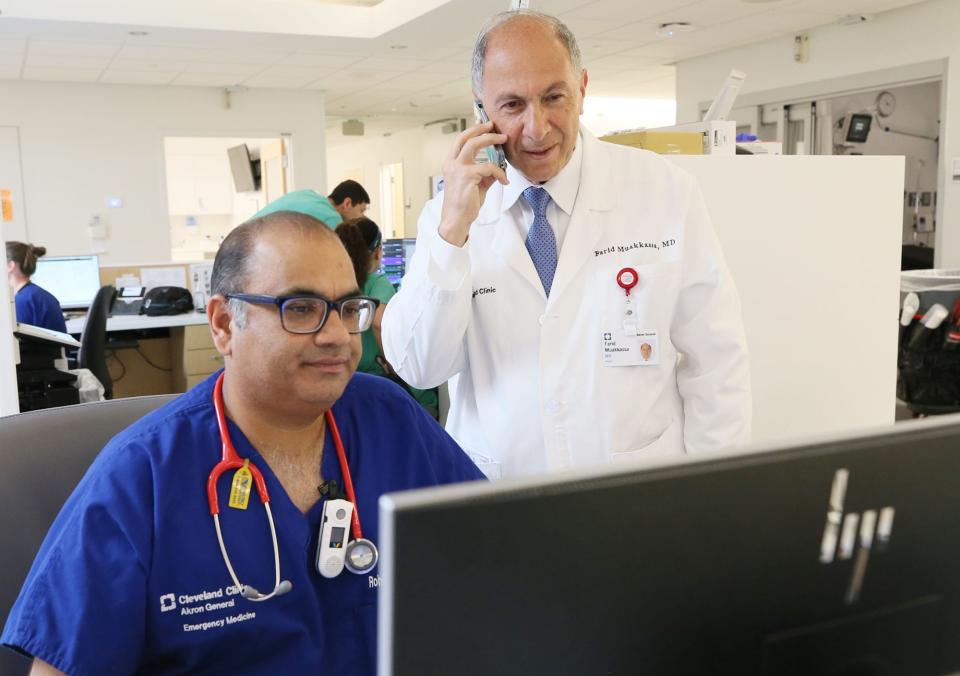
Brooks, who has been at Akron General for 18 years and the director of emergency medicine for six years, said the ER typically sees a couple patients with gunshot wounds each week.
On a recent weekday, a gunshot wound fatality had just occurred the night before during a shooting in which both victims died – one at Akron General and one at Summa.
Muakkassa said the patient had multiple gunshot wounds and was basically dead on arrival. It also wasn’t a shooting that occurred in the middle of the night. The patient arrived at 5:30 p.m. on a Wednesday.
“We’re always surprised,” Brooks said. “Like, it’s 11 o’clock in the morning, and we get somebody where a drug deal went bad and somebody got shot.
“It’s surprising how it’s changed over the last 20 years,” he said.
Akron has more Level 1 trauma centers than many U.S. cities
While many large metropolitan areas have only one Level I-designated trauma center, the Akron region has three: two adult centers at Akron General and Akron City and a pediatric center at Akron Children’s Hospital.
Patients coming into emergency departments are first seen by an emergency medicine physician who will activate the trauma team if emergency medical service crews haven’t already notified the hospital a trauma patient is coming, said Dr. Mark McDowell, medical director of the Summa Health Akron City Emergency Services.
EMS typically take gunshot wound victims who are 16 or younger to Akron Children’s, though it’s sometimes hard to determine a teen’s age in an emergency.
Oftentimes, members of the public erroneously think it’s quicker to put a patient in the back of their car and drive to the ER instead of waiting for an ambulance, said Carpenter, the Summa trauma program manager.
As a result, there are times when patients who have been shot are treated initially at a smaller hospital or freestanding ER before they’re transferred to a Level I trauma center.
“The large majority are going to come to our trauma centers, but someone that comes in by car, they don’t necessarily know the difference,” she said. “They know an emergency room is an emergency room.”
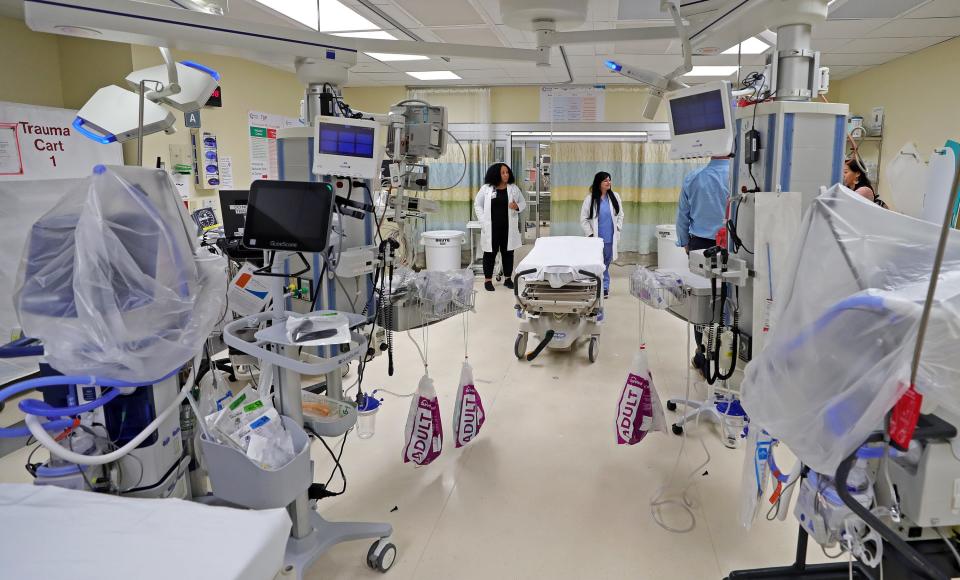
When Tyren Thompson, a 7-year-old pee wee football player, was shot in August after his game at Lane Field, bystanders didn't wait for an ambulance. They drove him to Akron General, which they believed was the closest emergency room, according to the family. Tyren was transferred blocks away by ambulance to Akron Children’s Hospital after the medical staff at Akron General stabilized him.
He survived and is recovering at home. But the incident has spurred a push for solutions to the increased gun violence in the community.
Caring for the mental health of trauma teams
Tyren’s case affected the mental health of the Akron General staff members, who weren’t used to treating such a young gunshot victim, said Brooks.
The hospital provides an employee assistance program and encourages staffers to access counseling.
But after Tyren’s case, Brooks said, “the physicians led a debrief and brought everybody together. We had spiritual care down and did a ten-minute debrief, and everybody got to just kind of let the emotions out.”
Counselors also came in the next day in order to be “proactive and reactive,” said Brooks.
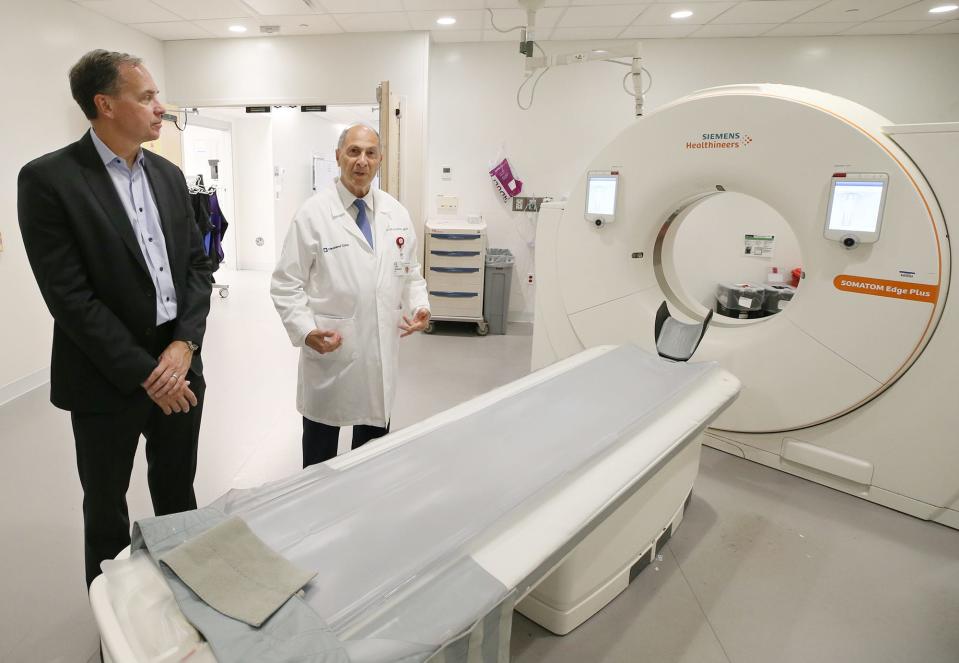
At Summa Akron City, the palliative care team is involved with almost each gunshot wound victim to support not only the patient and family but also the staff, said trauma critical care surgeon Dr. Rathna Shenoy, who is also the vice chair of the surgery department at Summa Akron City.
The medical staff also does a debrief, especially after an injury has ended in a death, to discuss how staff members are feeling and if there are things they could have done differently for the case, Shenoy said.
“We want to take a step back and really see, ‘Hey, this was a person, this was someone's loved one.’ It affects all of us, especially when that patient is young and had so many years to live,” Shenoy said.
At Akron Children’s, the medical teams also debrief after a difficult case and offer counseling services for the staff, said Pollauf.
Hospital ERs install metal detectors, increase security
Akron’s three trauma centers have beefed up security and installed metal detectors in recent years due to the increasingly violent nature of the injuries they're treating.
At Akron General, “we are manned with Cleveland Clinic police officers 24/7 here in the ER as well as security guards, who are not police officers,” said Brooks. “We have a minimum of three here at all times.”
The officers staff the metal detector, which was installed at the entrance of the new emergency department when it opened in 2018. All Cleveland Clinic ERs have or are getting metal detectors, Brooks said.
Summa’s metal detectors were installed about a year and a half ago, McDowell said.
“It has become a little bit more of a standard practice in emergency departments,” he said.
'It's just out of control.' Summit County data paints grim picture of growing gun violence
Children’s hospitals were a little slower in installing metal detectors in their emergency departments than adult ERs, said Pollauf, the director of Akron Children’s emergency department. When the latest ER opened in 2015, there was not a metal detector. It was installed in October 2019.
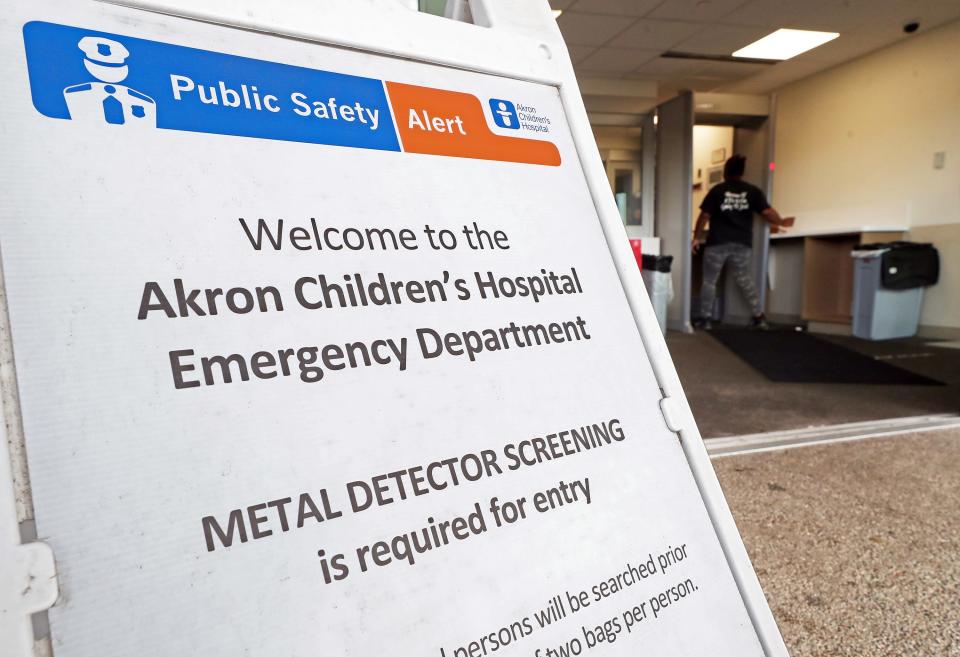
Children’s emergency department goes on lockdown any time there is a gunshot wound patient who arrives, said Pollauf. Families with emergency needs for their children can still be seen, but people are accompanied by public safety personnel entering and exiting the facility “until we know everything is safe,” she said.
Gunshot victims have a limit of two immediate family members who can be at their bedside at Children's, Pollauf said. Security will come to the trauma bays and entrances to the emergency department to ensure the safety of other family and friends, Heinzerling said.
There are times when Akron General’s emergency department also goes on lockdown when a gunshot wound victim is arriving or after one has arrived if there is a perceived threat to the patient or staff, Brooks said.
“If the Cleveland Clinic police officer on duty feels that it is an unsafe situation due to people arriving or what the scene was, they will put us on lockdown,” Brooks explained. “That protects the people who are here, so nobody can come in and injure them, and also to keep people out. We will still take ambulance traffic in and ... we will get patients in that need to come in.”
'Makes me sad.' Bullet fired at Lane Field ruptures little boy's spleen, shatters Akron community's heart
Brooks estimates lockdowns happen in about 10% of gunshot cases.
“If there are family members or a crowd of people following in, then we will go on lockdown,” said Brooks.
Family members wouldn’t be allowed in until the scene is safe and things are stabilized in the parking lot, he said.
“We try to de-escalate the situation in the waiting room and try to identify who is the family member to just focus on them because a lot of people will come in claiming to be family, friends, and want to know what’s going on,” Brooks said.
When Akron City Hospital’s emergency department goes on lockdown, “some of the times it’s based on the police and what their concern level is for the attack or the violent episode, as well as what's going on in the emergency department,” said McDowell.
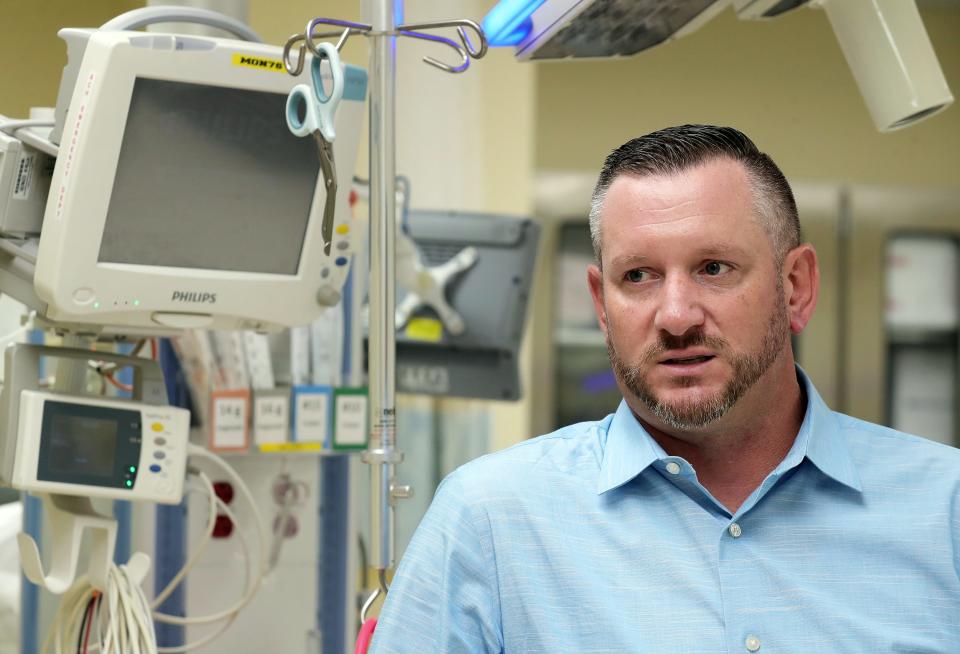
“There are times where, understandably, the community rallies and comes around to the [emergency] department with family members, friends, neighbors of the victim, and they want to know what's going on,” he said. There may be times, “to [keep] everybody else safe and [with] everything else that's going on in the department, we have to go on lockdown,” he added.
The hospital has staff and volunteers who will talk to family and friends to keep everyone safe, he said.
"Whenever that does happen, there's a lot of security that's outside the doors of the emergency department as well," McDowell said, adding that in those situations, they try to make sure to keep family members as updated and informed as possible.
If there has been a shooting with multiple victims and emergency crews have taken patients to Akron General and Summa, physicians and security from both hospitals will communicate with each other, Brooks said.
“EMS is very good. If there’s a shootout, they won’t bring both patients to us,” Brooks said. Similarly, if there is a mass casualty accident, like a pileup of car crashes or multiple shooting victims, emergency crews will coordinate with area hospitals to help control the potential load on the medical staff at each hospital, said Summa’s McDowell.
Safety precautions also are taken after a gunshot wound patient has been treated in the ER and is sent up to a regular hospital floor, said Akron General’s Muakkassa. Names are blocked on records and listed as confidential so people cannot find them.
Likewise, at Summa and Children’s, a shooting victim’s name is kept anonymous in the system until it’s deemed appropriate to change the status.
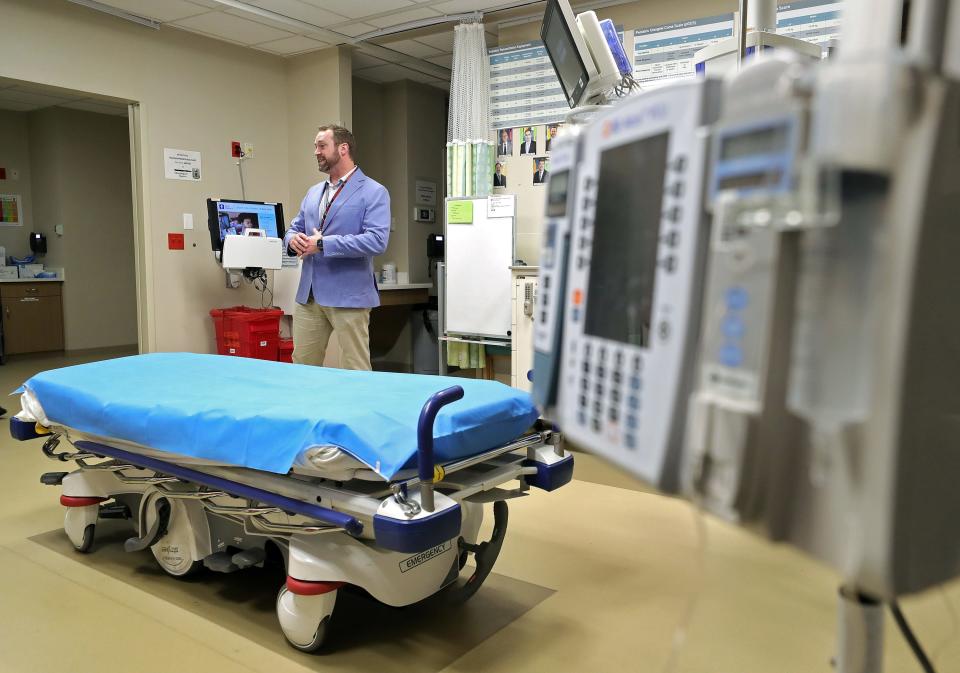
Additionally, patient records at Children’s for gunshot victims are password-protected for safety, Heinzerling said.
Once a pediatric patient is admitted and moved to a hospital floor, units are all locked, and visitors have to be buzzed in and have their IDs checked, Heinzerling said.
“On top of that, the patients that are gunshot victims, we limit access to social media to their phones so that they’re not inadvertently saying 'This is where I am,' to not only protect them but all of the others in the hospital,” he said.
The trauma staff at all three hospitals keep hoping the influx of gunshot wound patients arriving at their emergency departments will subside.
It was hard to tell why the trend increased during the pandemic, said Shenoy, the Summa trauma surgeon.
“We thought maybe once the lockdown was over and people got back to some semblance of normalcy, that maybe it would go down.
"We're definitely seeing more, and that's never what you want to see," she said. "But, unfortunately, it's the reality of the situation."
Reporter Betty Lin-Fisher can be reached at blinfisher@thebeaconjournal.com
This article originally appeared on Akron Beacon Journal: Akron gun violence leads to spike in shooting victims at ERs


